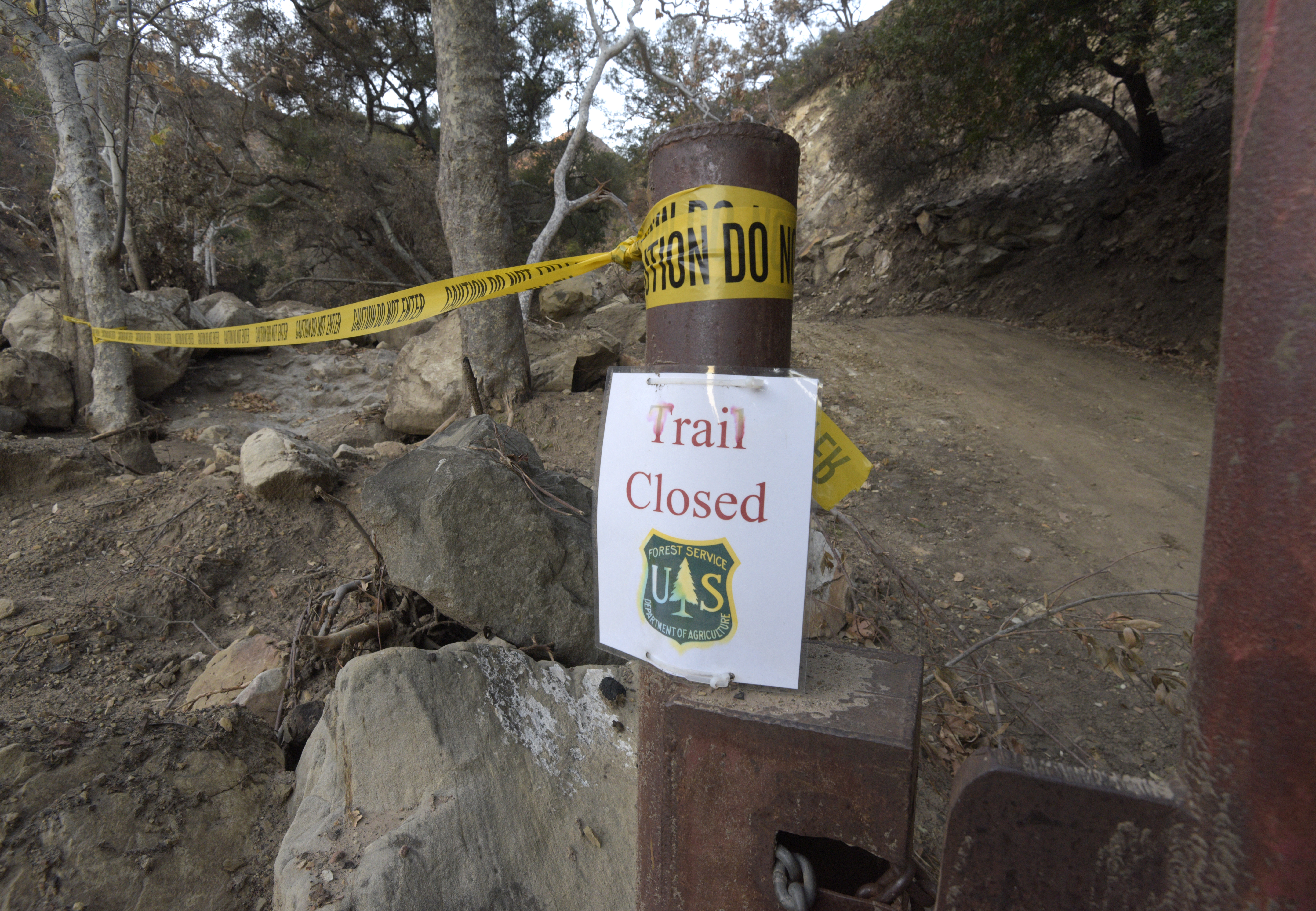The Uncertain Future of Montecito’s Trails
Mudslides Completely Reshaped Watersheds

The trails of Montecito’s front country have been forever altered by recent fires and mudslides, and it is too soon to say when and how they will reopen. Cold Spring, Hot Springs, Romero, and San Ysidro canyons are inaccessible, and all affiliated trails will remain so indefinitely. “Pretty much every major canyon in the burn area has been carved out — they are not riparian corridors; they are truly canyons at this point,” said resident trail expert and outdoor columnist Ray Ford during a January 18 talk at Faulkner Gallery. Ford described these now-barren watersheds and their dangerous drop-offs, with washed-out creek beds deepened by 10-15 feet and canyons now devoid of vegetation 20-30 feet above typical water levels.
“It’s a little too soon” to say when the trails may reopen or what such an operation would cost, said Los Padres National Forest District Ranger John “Pancho” Smith. “Sociopolitically, I’m not going to start pushing out trail assessments and trail repair in the face of flooding that happened in Montecito. I don’t think that’s right.” Future rains may further contort the canyons and make trail access difficult or even impossible; the Romero Canyon bridge, for example, was destroyed. “It’s so early in this process,” said Los Padres ForestWatch Conservation Director Bryant Baker. “This is just the beginning of the rainy season, and it’s likely to keep changing.” Baker projects that the Thomas Fire burn area will need at least a year to reopen.
From the Montecito front country to the entire Matilija Wilderness and elsewhere in Los Padres, “the trails are still a public-safety hazard,” Smith said. “This country is very steep and rugged, and until the hillsides revegetate, there’s not a lot of sense doing a lot of work there.” Any work that would be done in the future would be “on relatively small pieces of the trail for the most part, and … to prevent the trail from either contributing more sedimentation to the area or keep the trail from washing out the parts that have not washed out already,” he said.
Prior to the mudslides, Smith met with the Montecito Trails Foundation, the Los Padres Forest Association, and the S.B. Mountain Bike Trail Volunteers, among other groups, to discuss needed trail repairs. Ford said that Romero Canyon and other trails “need to be maintained to more sustainable standards” in the future so as to avoid being in the direct path of water. Some groups, like the Santa Barbara Bloom Project, hope to plant seedlings in areas, such as along San Ysidro Trail, a process that Baker said is more difficult than it would seem. “It’s a little tricky to reseed areas because they’re so dependent on the perfect moisture conditions and light conditions, and different species may be native to our area, but they don’t really grow in that specific canyon,” he said. He suggests the best strategy is to “let the natives come back on their own — they will; they have great seed banks stored up in the soil. We just want to be careful about making sure that the native assemblages come back appropriately.”
As far as the backcountry, Smith says he is working on repairing the Romero Camuesa Road, but it is still too dangerous to be opened. “The road has places where the water undercut the pavement. ‘Road closed’ means road closed,” he said.



